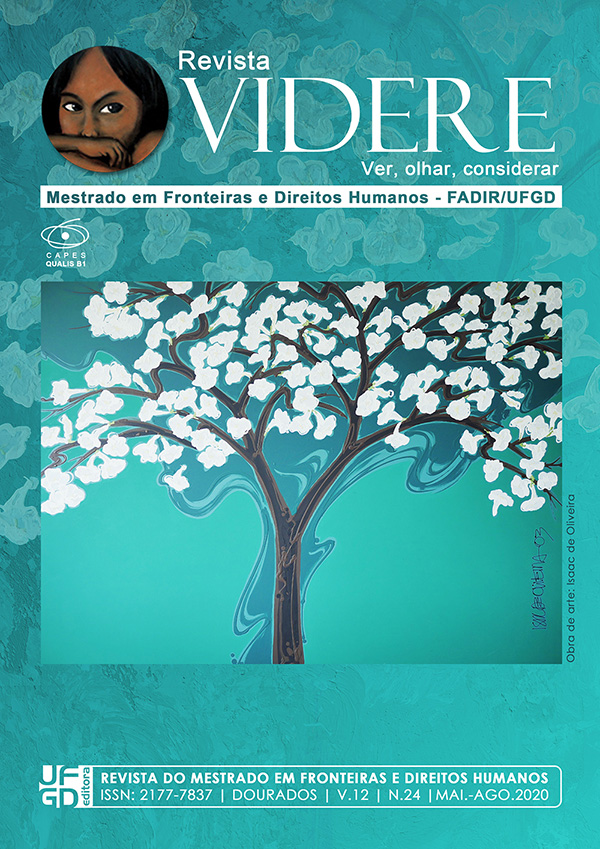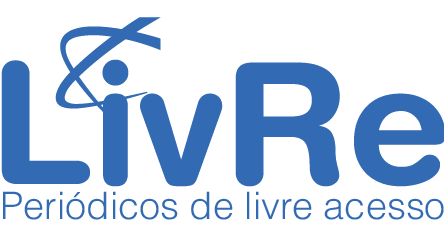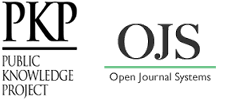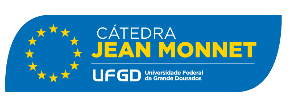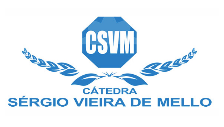The periodic reporting procedure of the United Nations System and the human right to water: opportunities and challenges
DOI:
https://doi.org/10.30612/videre.v12i24.11612Palabras clave:
Human Right to Water. United Nations System. Monitoring. Reporting Procedures.Resumen
Water is fundamental to life. Yet it was only in the 1970s that access to water began to be discussed at the international level as a human right. Before that, some United Nations Conventions and Treaties recognized the right to water in some way, but this right had to be inferred from other rights or was limited to a certain category of people. Regardless of their limitations, these texts can be seen to support the implementation of the human right to water, especially through their monitoring mechanisms: the periodic reporting procedure and the contentious cases. The objective of this article is to analyse the extent to which the periodic reporting procedure contributes to the implementation of the human right to water. To that aim, qualitative methodology will be used. Documentary research, the study of jurisprudence and international legislation will be used to support information regarding universal access to potable water. It seems that the periodic reporting procedure indeed reinforces the existence of a human right to water, but as far as its effective implementation is concerned, the contribution of this monitoring mechanism depends on the compliance of the countries.Descargas
Citas
ALSTON, Philip; GOODMAN, R. International Human Rights. The Successor to International Human Rights in Context: Law, Politics and Morals. Oxford: Oxford University Press, 2013.
BASSIOUNI, Cherif. “A Critical Introduction Assessment of the UN Human Rights Machanisms”, in Bassiouni and Schabas (Eds.), New Challenges for the UN Human Rights Machinery. Cambridge: Intersentia, 2011, pp. 1-14.
BALDWIN-PASK, Tania; SCANNELLA, Patrizia. “The unfinished business of a Special Procedures System, in Bassiouni and Schabas (Eds.), New Challenges for the UN Human Rights Machinery. Cambridge: Intersentia, 2011, pp. 419-478.
DE ALBUQUERQUE, Catarina. Handbook on realizing the rights to water and sanitation. Geneva: United Nations publishing, 2014.
GAER, Felice D. “Implementing Treaty Body Recommendations”, in Bassiouni and Schabas (Eds.), New Challenges for the UN Human Rights Machinery. Cambridge: Intersentia, 2011, pp. 107-122.
GARCÍA, Aniza. El derecho humano al agua. Madrid: Editorial Trotta, 2008.
KONURALP, Pamukcu. “The right to water: an assessment”, Contemporary Politics, Volume 11, Number 2–3, 2011.
MARTINETTI, Françoise. Les droits de l’enfant. Paris: E.J.L., 2007.
NAELA, Gabr. General Recommendation on Article 14 of CEDAW Rural Women. 2012.
NOWAK, Manfred. “It is time for a World Court of Human Rights”, in Bassiouni and Schabas (Eds.), New Challenges for the UN Human Rights Machinery. Cambridge: Intersentia, 2011, pp. 17-32.
O`FLAHERTY, Michael; PEI-LUN, Tsai. “Periodic Reporting: the Backbone of the UN Treaty Body Review Procedures”, in Bassiouni and Schabas (Eds.), New Challenges for the UN Human Rights Machinery. Cambridge: Intersentia, 2011, pp. 37-56.
RISSE, Martin. “The Human Right to water and common ownership of the Earth”, The Journal of Political Philosophy, Volume 22, Number 2, 2014.
RODLEY, Nigel. “UN treaty bodies and the Human Rights Council”, in Grover, UN Human Rights Treaty Bodies: Law and Legitimacy. Cambridge: Cambridge University Press, 2012, pp. 320-355.
ROSENCZVEIG, J.P. Le dispositif français de protection de l’enfance. Paris: Jeunesse et Droit, 2005.
SAKSENA, Anu. “CEDAW: Mandate for Substantive Equality”, Indian Journal of Gender Studies, 14:3, 2007.
SCHMIDT, Markus. “Follow-up Activities by UN Human Rights Treaty Bodies and Special Procedures Mechanisms of the Human Rights Council – Recent Developments”, in Alfredsson, Grimheden, Ramcharan and de Zayas (Eds.), Internatinoal Human Rights Monitoring Mechanisms: Essays in Honours of Jakob Th. Möller. Leiden: Martinus Nijhoff Publishers, 2009, pp. 25-34.
WINKLER, Inga. The Human Right to Water: Significance, Legal Status and Implications for Water Allocation. Oxford: Hart Publishing, 2012.
DOCUMENTS OF THE UNITED NATIONS SYSTEM
COMMITTEE ON THE ELIMINATION OF DISCRIMINATION AGAINST WOMEN. “Information provided by Brazil in follow-up to the
concluding observations”, Doc. CEDAW/C/BRA/CO/7/Add.1April 2014.
HUMAN RIGHTS COMMITTEE. “Replies of Colombia to the list of issues”, doc. CCPR/C/COL/Q/7/Add.1, August 2016.
COMITÉ DE DERECHOS HUMANOS. “Observación general numero 6. El derecho a la vida (art. 6 PIDCP)”, doc. HRI/GEN/1/Rev. 0 (Vol. I), 1982.
COMMITTEE ON ECONOMIC, SOCIAL AND CULTURAL RIGHTS. “General Comment number 15 “The right to water””, doc. E/C.12.2002/11, 2003.
COMMITTEE ON ECONOMIC, SOCIAL AND CULTURAL RIGHTS. “Concluding observations of the Committee on Economic, Social and Cultural Rights”, doc. E/C.12/BRA/CO/2, 2009.
COMMITTEE ON ECONOMIC, SOCIAL AND CULTURAL RIGHTS. “Guidelines on treaty-specific documents to be submitted by states parties under articles 16 and 17 of the International Covenant on Economic, Social and Cultural Rights”, doc. E/C.12/2008/2, 2009.
COMMITTEE ON ECONOMIC, SOCIAL AND CULTURAL RIGHTS. “Concluding observations of the Committee on Economic, Social and Cultural Rights”, doc. E/C.12/BRA/CO/2, 2009.
COMMITTEE ON ECONOMIC, SOCIAL AND CULTURAL RIGHTS. “Concluding observations on the combined third and fourth periodic reports of Jamaica, adopted by the Committee at its fiftieth session”, doc. E/C.12/JAM/CO/3-4, 2013.
COMMITTEE ON ECONOMIC, SOCIAL AND CULTURAL RIGHTS. “Miguel Ángel López Rodríguez versus Spain”, Communication No. 1/2013, 2013.
COMMITTEE ON ECONOMIC, SOCIAL AND CULTURAL RIGHTS. “I.D.G. versus Spain”, Communication No. 2/2014, 2014.
COMMITTEE ON ECONOMIC, SOCIAL AND CULTURAL RIGHTS. “General Comment Number 1: Reporting by States Parties”, 1989.
COMMITTEE ON THE ELIMINATION OF DISCRIMINATION AGAINST WOMEN. “Guidelines on the form and content of reports to be submitted by States parties to the International Human Rights Treaties”, doc. HRI/GEN/2/Rev.1/Add.2, 2003.
COMMITTEE ON THE ELIMINATION OF DISCRIMINATION AGAINST WOMEN. “Assessment of the follow-up procedure under the Article 18 of the CEDAW Convention”, 2016.
COMMITTEE ON THE ELIMINATION OF DISCRIMINATION AGAINST WOMEN. “Case Kell versus Canada”, Communication No. 19/2008, doc. CEDAW/C/51/D/19/2008, 2008.
COMMITTEE ON THE ELIMINATION OF DISCRIMINATION AGAINST WOMEN. “Case Anna Belousova versus Kazakhstan”, Communication No. 45/2012, doc. CEDAW/C/61/D/45/2012, 2012.
COMMITTEE ON THE ELIMINATION OF DISCRIMINATION AGAINST WOMEN. “Concluding observations of the Committee on the Elimination of Discrimination against Women”, doc. CEDAW/C/BRA/CO/7, 2012.
COMMITTEE ON THE ELIMINATION OF DISCRIMINATION AGAINST WOMEN. “Concluding observations on the combined eighth and ninth periodic reports of Haiti”, doc. CEDAW/C/HTI/CO/8-9, 2016.
COMMITTEE ON THE RIGHTS OF PERSONS WITH DISABILITIES (2009): “Guidelines on treaty-specific document to be submitted by states parties under article 35, paragraph 1, of the Convention on the Rights of Persons with Disabilities”, doc. CRPD/C/2/3, 2009.
COMMITTEE ON THE RIGHTS OF PERSONS WITH DISABILITIES. “Mr. X versus Argentina”, Communication No. 8/2012, doc. CRPD/C/11/D/8/2012, 2012.
COMMITTEE ON THE RIGHTS OF PERSONS WITH DISABILITIES. “Concluding observations on the initial report of Guatemala”, doc. CRPD/C/GTM/CO/1, 2016.
COMMITTEE ON THE RIGHTS OF THE CHILD. “Concluding observations – Guatemala”, doc. CRC/C/GTM/CO/3-4, 2010.
COMMITTEE ON THE RIGHTS OF THE CHILD. “Treaty-specific guidelines regarding the form and content of periodic reports to be submitted by States parties under article 44, paragraph 1 (b) of the Convention on the Rights of the Child”, doc. CRC/C/58/Rev.2, 2010.
COMMITTEE ON THE RIGHTS OF THE CHILD. “Concluding observations on the combined second to fourth periodic reports of Brazil”, doc. CRC/C/BRA/CO/2-4, 2015.
COMMITTEE ON THE RIGHTS OF THE CHILD. “Examen de los informes presentados por los Estados partes en virtud del artículo 44 de la Convención – Guatemala”, doc. CRC/C/GTM/5-6, February 2017.
COMMITTEE ON THE RIGHTS OF THE CHILD. “Concluding observations on the combined fifth and sixth periodic reports of Guatemala”, doc. CRC/C/GTM/CO/5-6, February 2018.
HUMAN RIGHTS COMMITTEE. “Concluding observations of the Human Rights Committee on Nicaragua”, doc. CCPR/C/NIC/CO/3, 2008.
HUMAN RIGHTS COMMITTEE. “Guidelines for the treaty-specific document to be submitted by States parties under article 40 of the International Covenant on Civil and Political Rights”, doc. CCPR/C/2009/1, 2010.
HUMAN RIGHTS COMMITTEE. “Focused reports based on replies to lists of issues prior to reporting (LOIPR): Implementation of the new optional reporting procedure (LOIPR procedure)”, doc. CCPR/C/99/4, 2010.
HUMAN RIGHTS COMMITTEE. “List of issues in relation to the seventh periodic report of Colombia”, CCPR/C/COL/Q/7, april 2016.
HUMAN RIGHTS COMMITTEE. “Note by the Human Rights Committee on the procedure for follow-up to concluding observations”, doc. CCPR/C/108/2, 2013.
HUMAN RIGHTS COMMITTEE. “Liliana Assenova Naidenova et al. versus Bulgaria, Communication No. 2073/2011”, doc. CCPR/C/106/D/2073/2011, 2011.
HUMAN RIGHTS COMMITTEE. “Concluding observations on the seventh periodic report of Colombia”, doc. CCPR/C/COL/CO/7, 2016.
HUMAN RIGHTS COMMITTEE. “Note by the Human Rights Committee on the procedure for follow-up to concluding observations”, doc. CCPR/C/108/2, 2013.
UNICEF AND WHO. Progress on Sanitation and Drinking Water – 2015 update and MDG assessment. Available at: http://apps.who.int/iris/bitstream/10665/177752/1/9789241509145_eng.pdf, last visited on March 2020.
UNITED NATIONS. “Vienna Declaration and Programme of Action”, 1993.
UNITED NATIONS. “Individual Complaints Procedures under the United Nations Human Rights Treaties, Fact Sheet Number 7”, New York/Geneva, 2013.
UNITED NATIONS. “Follow-up to concluding observations”. 2017. Available at: http://www.ohchr.org/EN/HR, last visited on March 2020.
UNITED NATIONS. “Procedures of the human rights treaty bodies for following up on concluding observations, decisions and Views”, doc. HR/MC/2017/4, 2017.
UNITED NATIONS. “Resolution on the Human Right to Water and Sanitation”, doc. A/64/292, 2010. Available at: http://www.un.org/News/Press/docs/2010/ga10967.doc.htm, last visited on February 2020.
Descargas
Publicado
Cómo citar
Número
Sección
Licencia
Os autores devem aceitar as normas de publicação ao submeterem a revista, bem como, concordam com os seguintes termos:
(a) O Conselho Editorial se reserva ao direito de efetuar, nos originais, alterações da Língua portuguesa para se manter o padrão culto da língua, respeitando, porém, o estilo dos autores.
(b) Autores mantém os direitos autorais e concedem à revista o direito de primeira publicação, com o trabalho simultaneamente licenciado sob a Atribuição-NãoComercial-CompartilhaIgual 3.0 Brasil (CC BY-NC-SA 3.0 BR) que permite: Compartilhar — copiar e redistribuir o material em qualquer suporte ou formato e Adaptar — remixar, transformar, e criar a partir do material. A CC BY-NC-SA 3.0 BR considera os termos seguintes:
- Atribuição — Você deve dar o crédito apropriado, prover um link para a licença e indicar se mudanças foram feitas. Você deve fazê-lo em qualquer circunstância razoável, mas de nenhuma maneira que sugira que o licenciante apoia você ou o seu uso.
- NãoComercial — Você não pode usar o material para fins comerciais.
- CompartilhaIgual — Se você remixar, transformar, ou criar a partir do material, tem de distribuir as suas contribuições sob a mesma licença que o original.
- Sem restrições adicionais — Você não pode aplicar termos jurídicos ou medidas de caráter tecnológico que restrinjam legalmente outros de fazerem algo que a licença permita.
